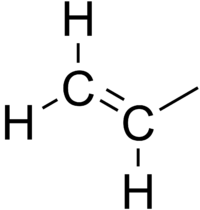Has anyone used Siser EasySubli in their Glowforge? It is not one of their listed ‘Laser safe’ vinyls but it does appear to be made of PU, which I believe is safe. It also claims that most of their vinyls are PVC free. Thanks.
If it says it’s polyurethane and you’re OK, and generally sublimation surfaces are polyurethane.
People have lasered a lot of sublimation materials and posted about it here. You should be fine. Post pictures of your end result! We love to see new projects.
Thanks for your reply.
I looked up the product information sheet and it showed the composition as PU, which I believe is short for polyurethane. Their website shows a laser-safe icon on the vinyl that can be cut on a laser, but EasySubli does not have one. Maybe that’s because it’s not considered a vinyl. ![]()
I will be sure to post the end result.
I know folks have reached out to their customer service before. It might be interesting to ask why they don’t have it listed with the icon.
It’s possible it’s that they’re not happy with the results as PU can be a little melty.
Looking forward to what you do!
I did actually reach out to them this morning and didn’t really expect to hear anything for a few days, but they came back to me earlier today with this…
…Good afternoon Jane,
My name is Carolyn and I work in Siser product support. Thank you for your inquiry! Unfortunately, EasySubli is not safe for laser cutting.
If you have any additional questions, please let us know! …
She doesn’t say why either
It may be something in the coating or colouring ![]()
Yes maybe. Oh well, I guess I’ll have to rely on my trusty Cricut Maker to do the job. Shame ![]()
All vinyl is PVC or not actually vinyl. The key issue of Polyvinylchloride is the chloride part. It becomes Hyrochloric acid that is bad for you but also attacks your machine damaging everything metal, particularly the electronics, chips etc.
While this is correct it is confusing because of how often the term “vinyl” is misused.
Vinyl is a catch-all term that can mean the actual plastic used in something or a variety thin adhesive plastic films. With that in mind:
All PVCs are vinyl but not all vinyls are PVC.
This applies to the actual plastics (there are so many types of vinyl compounds) as well as adhesive or heat transfer films that are marketed as “vinyl”. Even Glowforge calls their proofgrade “vinyl” when we know it’s made of polyurethane.
With any plastic it’s crucial that you understand what it’s made of.
As for this bit:
I suspect they mean “it might catch on fire” or “it is unsafe to breathe the fumes”. This is true of literally everything you laser, so that’s not a specific concern. This big risk, as always, is PVC. Their site seems to indicate that it’s made of polyurethane which lasers well and does not emit compounds that will damage your machine.
I’d push back on Carolyn and find out why specifically she said that.
For more context on what materials are dangerous to put in your laser and why, check out number four on this list:
If anyone’s still reading and wants to see how many vinyl compounds there are (it’s a huge family of organic chemicals), check out this wiki page:
Behold, the vinyl group: you got one or more of these and you’re a vinyl ![]()

I did ask the Siser rep if their EasySubli was PVC. She came back with this…
Hello Jane,
You are welcome! Unfortunately, we are not able to provide information on the composition of EasySubli HTV. However, we can provide the CPSIA certificate and safety data sheet for this product. Both are attached.
Like yourself, I’d already seen that they had stated PU on their website so not quite sure why she is saying that.
Thanks for the links I will have a look at them.
Can you post the safety data sheet? We can tell from there if it’s got chlorides as decomposition byproducts.
More and it is polyvinyl, now mostly known as karen but a bit of bigotry in either case.
Sorry, not following you.
Yes of course. No problem. Please find both the SDS and the CPSIA Certificate attached.
Thank you.
Siser EasySubli SDS.pdf (406.1 KB)
Siser EasySubli CPSIA CERTIFICATE.pdf (741.2 KB)
Nothing in the decomposition section about chlorides or hydrochloric acid. This is not PVC. As with any plastic the fumes are harmful but if you have good ventilation that’s not an issue.
Thanks for confirming. Sounds hopeful!
My GF is in a cabin in the garden and is vented to the outside, but I am aware that a small amount of fumes can still build up inside. If I ensure that the window is open and the fan is on, then this should be ok to go ahead with.
Like anything toxic, the less the better.
This is one of the perks of an external fan. You can run it independently and keep it venting for as long as you like. Great for sucking those little bits of fumes out of the Glowforge.
Yes, I’m thankful for that.
Any recommendations for settings?
Yup! Same recommendation as any other material: check out #6 here for a solid testing method.
For an Aura temprature and humidity are not as critical as in the bigger machines but there are still a range that can mess with your machine. An upper end of 110 degrees F seems unlikely but a winter temp below 55 degrees F seems more likely, and morning fog getting in the machine could be a problem for any of us.
Depending on the nature of the cabin that may or may not be a problem.